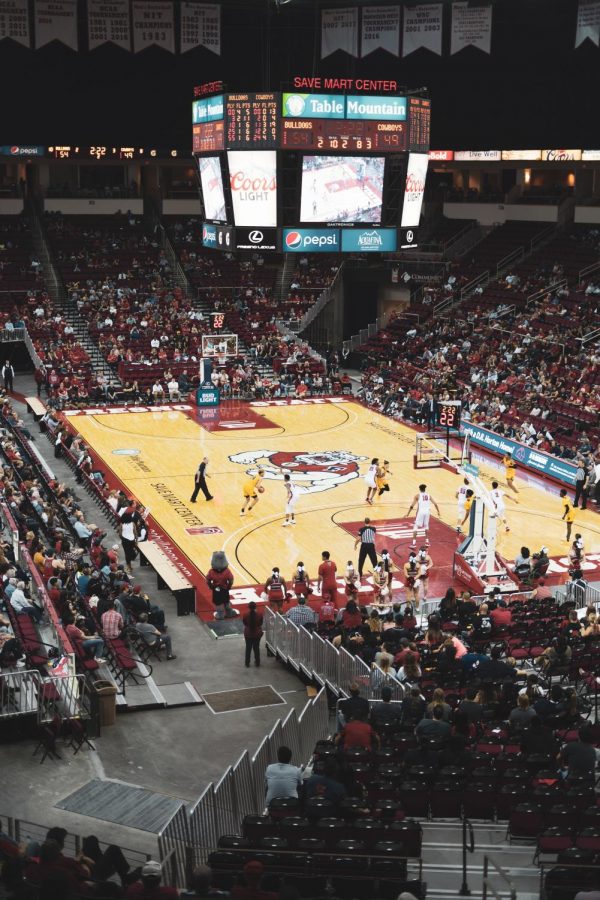To Pay or Not To Pay, That Is The Question: College Athletes
An exploration of the debate around paying college athletes.
“When college teams start paying their athletes, it will make the fans question who they’re rooting for — the team that they associate themselves with, or the player themselves,” said Ellie White of Northfield, Michigan.
Being a Division I athlete is a full time job. Not only are these college athletes students responsible for keeping up with their full course load and making sure that their grades meet the cutoff scores, but they are also fully scheduled outside of class. My mother was recruited to play basketball for Princeton, and although her experience took place a while ago and was not for an athletic powerhouse school such as the University of Connecticut or Stanford, she often speaks about the grueling three-hour practices that occurred six days a week, not to mention the many hours that she and her teammates spent traveling to and from the other schools.
Not only are these students worked to the bone academically and athletically, but most have turned what once was sports for the somewhat talented into the “mini-pros.” These students are not amateurs any more. For example, take a look at the University of Connecticut first year basketball player Paige Bueckers, who was the number one recruit of the Class of 2020, and showed us all why she deserved that title as she led her already star-studded team to the Final Four. She played above and beyond girls that were 4 years her senior, and was named the Associated Press’s Player of the Year, becoming the only first year to ever receive this award. It was evident to most fans that Bueckers belonged in the WNBA, as her skills were no longer at a level that could be described as amateur.
Keeping all of this in mind, we also have to understand that the NCAA is making a profit off of these athletes. For example, jerseys with Bueckers’ name on the back would become coveted after her hard work got her that Player of the Year award. However, even in the case of the jersey with her name on it, Bueckers would see none of the profits. This is because the NCAA controls players’ Name, Image and Likeness rights (or NIL rights), and so any money earned using a player’s NIL is legally the NCAA’s. This is crucial, as many college athletes are marginalized and come from underprivileged communities. Sports are often a ticket out for kids coming from difficult situations.
Madeline Jahaly, a high school senior from Katonah, New York said, “If athletes aren’t able to get a job because of their intense practice schedule, and they can’t monetize off of their fame, how are they supposed to have money? It’s common for college students to want to earn money in order to be able to go out with their friends or something like that. Why should athletes be excluded from that?” It was for these reasons that she supports paying college athletes a percentage of the NCAA’s yearly profit, which in 2019 was a staggering 1.18 billion dollars. “It’s crazy that administrators in the NCAA are getting paid more than the people who actually entertain the public,” she said. “It just doesn’t feel right.”
Victoria Phang ‘18, a former member of the Bronx Science Girls’ Varsity Basketball team, feels differently, however. “Most Division I students are going to school on a full ride,” she said. “Isn’t that payment enough?”
Ellie White of Northfield, Michigan felt similarly. “Providing all of those scholarships already creates a dip in those profits,” she said. “Additionally, my family and I, we say that college sports is about the name on the front of the jersey and what that team represents, but professional sports is about the name on the back of the jersey, and what that player represents. When college teams start paying their athletes, it will make the fans question who they’re rooting for — the team that they associate themselves with, or the player themselves.”
As professional sports have developed, we have learned that star power is is usually perceived as more exciting than teamwork. Look at the NBA, for example. This organization has turned a team game into a series of one-on-one opportunities in which no one plays defense. Paying college players could ruin the game, which would drive away viewers who switched from professional sports for that reason.
While they disagreed on payment directly from the NCAA, all three of my interviewees agreed that the NCAA should stop requiring athletes to sign away their NIL rights. “The NCAA should allow athletes to monetize off of social media platforms such as YouTube and Tiktok,” said Phang. “I don’t see the harm and actually see the two things as separate things that a person could be interested in doing,” she continued. Not only could athletes monetize their social media, but gaining their NIL rights back would allow them to form brand partnerships. Collaborating with big name companies such as Nike or Adidas would bring in traffic to the NCAA and the sports themselves, upping their ratings and ticket sales. This would then make up for the profits that the NCAA is currently taking away from the people who truly deserve it, the people who are the reason that we watch — the athletes themselves.
“The NCAA should allow athletes to monetize off of social media platforms like YouTube and Tiktok,” said Phang. “I don’t see the harm and actually see the two things as separate things a person could be interested in doing.”
Lucy Del Deo is an Editorial Editor for 'The Science Survey.' She grew up reading 'The New York Times' with her parents and has been inspired to pursue...

